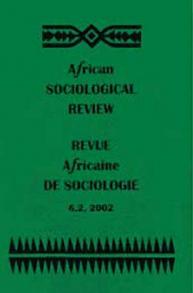Article 15p.
Literature seems to regard a community as a grouping of individuals united for a common purpose. In this paper, I augment the discrete constituents – the social units ‘individual’ and ‘group or community’ – to form a matrix with four categories in an attempt to better explain pluralistic realities witnessed in Africa. I show how individuals (which I define as human beings seen separately from their social connections) group together to form ‘conglomerates’ (grouping of individuals to achieve a common goal), while ‘communities’ consist of ‘persons’ (human beings in constant reflexivity to their social connections), not individuals. In building the argument, I categorise the social units, elaborate on categories and affiliated concepts from two main perspectives (non-Western and Western), and provide multi-focal nuances. The paper contributes a conceptual framing with the hope to move the discourse on how humans group as social beings, and how these groups can be called and recognised in practice.








